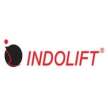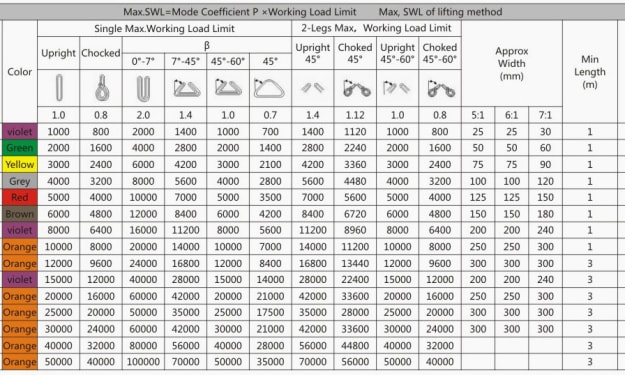D Shackles in Construction and Industrial Applications
D Shackles: Essential Components for Safe and Efficient Operations

In the vast landscape of construction and industrial operations, where strength, reliability, and safety are paramount, heavy-duty lifting equipment plays a pivotal role. Among the essential components in this category, D shackles stand out as robust and versatile tools that are indispensable for various lifting applications.
What are D Shackles?
D shackles, also known as Dee shackles or bow shackles, are U-shaped metal components with a distinctive pin mechanism securing the two ends. The shape resembles the letter "D" or a horseshoe, and it is this design that gives D shackles their name. These shackles are commonly made from high-strength materials such as alloy steel or stainless steel, ensuring durability and resistance to heavy loads and harsh environmental conditions.
Components of a D Shackle
Bow: The curved, U-shaped portion of the shackle.
Pin: The straight bar that secures the bow ends and can be threaded or unthreaded.
Collar: A small piece that surrounds the pin and helps keep it in place.
Heavy-Duty Lifting Applications:
1. Construction Industry
In construction, D shackles play a pivotal role in lifting and securing heavy loads. Whether it's lifting steel beams, concrete panels, or other construction materials, D shackles are used to create reliable connections between lifting equipment and the loads being hoisted. Their robust design and high load-bearing capacity make them essential for ensuring the safety and stability of construction operations.
2. Manufacturing and Industrial Settings
Within manufacturing facilities and industrial settings, D shackles find applications in various lifting and rigging tasks. From hoisting machinery and equipment during installation to securing loads on conveyors or cranes, these shackles are versatile components that contribute to the efficiency and safety of industrial operations.
3. Maritime and Offshore Operations
In maritime environments, where heavy loads need to be lifted on ships or offshore platforms, D shackles are relied upon for their strength and resilience in corrosive conditions. They are commonly used in lifting applications, securing cargo, and connecting rigging components in shipyards, harbors, and offshore installations.
4. Utilities and Power Generation
The utility and power generation sectors involve the lifting of large and heavy equipment, such as transformers, generators, and turbines. D shackles are crucial components in these operations, providing a secure connection between lifting equipment and the loads. Their ability to withstand high loads makes them integral to maintaining the reliability and safety of power infrastructure.
Best Practices for Using D Shackles in Heavy-Duty Lifting
• Know the Working Load Limit
Before using D shackles, it is essential to know their Working Load Limit (WLL). The WLL is the maximum load that a shackle is designed to handle under normal working conditions. Exceeding the WLL can compromise the integrity of the shackle and pose serious safety risks. Always check and adhere to the manufacturer's specifications and guidelines.
• Inspect Shackles Regularly
Regular inspection is crucial for ensuring the safety and longevity of D shackles. Inspect for signs of wear, deformation, or damage before each use. If any defects are detected, replace the shackle immediately. Routine inspections should also include checking the pin, bow, and collar for any abnormalities.
• Properly Store and Handle Shackles
Store D shackles in a dry, cool environment to prevent corrosion. Proper handling is essential to avoid damage to the pin or bow. When using shackles, ensure that the pin is correctly threaded and tightened to prevent accidental disengagement during lifting operations.
• Use the Right Shackle for the Job
Different lifting scenarios may require specific types of D shackles. Ensure that you are using the right shackle for the job by considering factors such as load type, load weight, and the environment. Select shackles with appropriate materials and coatings to resist corrosion in challenging conditions.
• Consider Shackle Orientation
The orientation of the shackle can affect its load-bearing capacity. When using a D shackle, it's crucial to align the load correctly with the shackle bow. Misalignment can reduce the WLL and compromise the safety of the lifting operation.
• Implement Safe Rigging Practices
D shackles are often part of a larger rigging system. Implementing safe rigging practices, including proper sling angles and load distribution, ensures that the load is evenly distributed among the lifting components. This helps prevent uneven stress on the shackle and improves overall lifting safety.
• Provide Training for Operators
Operators involved in heavy-duty lifting operations should receive proper training on the use and inspection of D shackles. Training programs should cover essential topics such as load calculations, shackle selection, inspection procedures, and adherence to safety standards.
D shackles stand as stalwart components in the realm of heavy-duty lifting within the construction and industrial sectors. Their robust design, versatility, and reliability make them indispensable for a wide range of applications, from construction sites to offshore platforms. By understanding their basics, adhering to best practices, and prioritizing safety, professionals can harness the full potential of D shackles in lifting operations, ensuring efficiency, longevity, and, most importantly, the well-being of all those involved in heavy-duty lifting endeavors.
About the Creator
Jyoti Kashuka
"Discover the Comprehensive Range of Material Handling Solutions by Indolift"






Comments
There are no comments for this story
Be the first to respond and start the conversation.